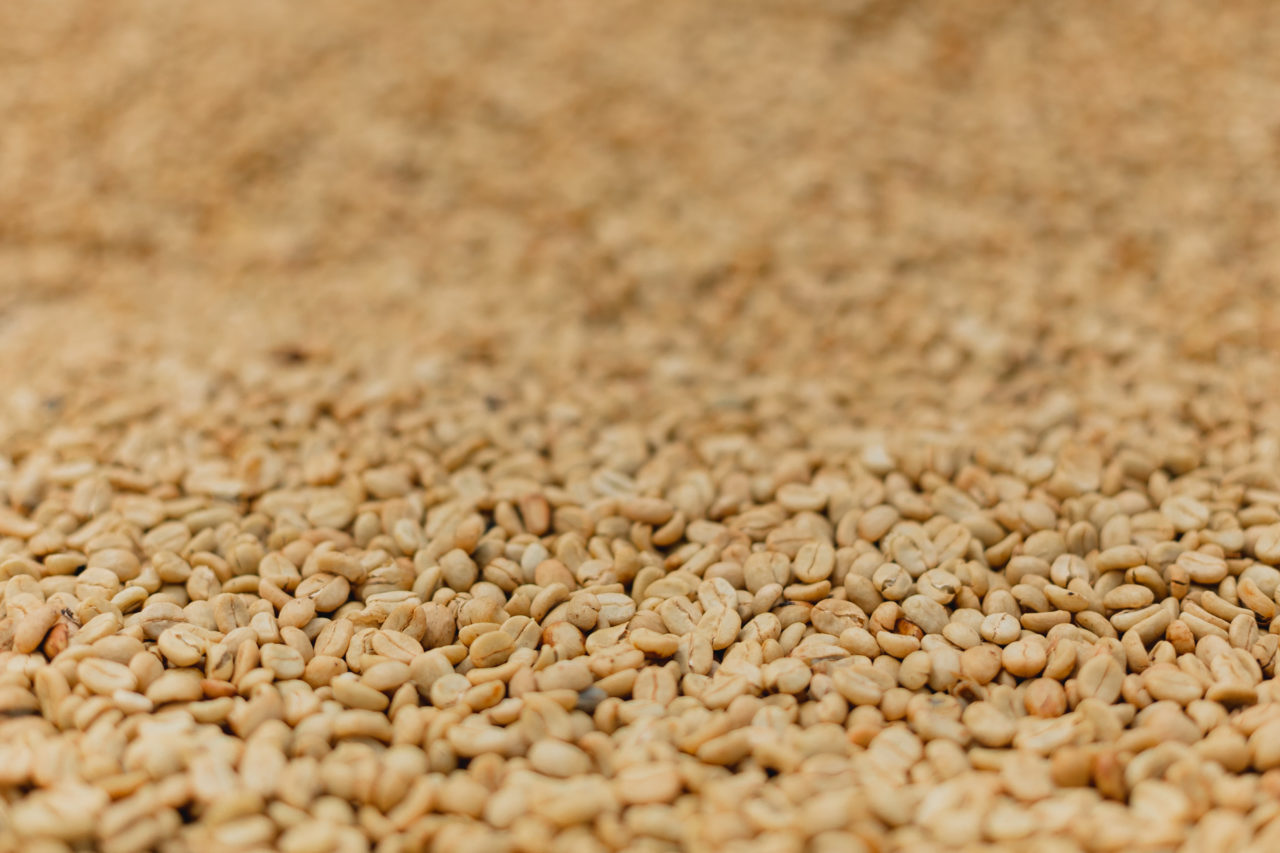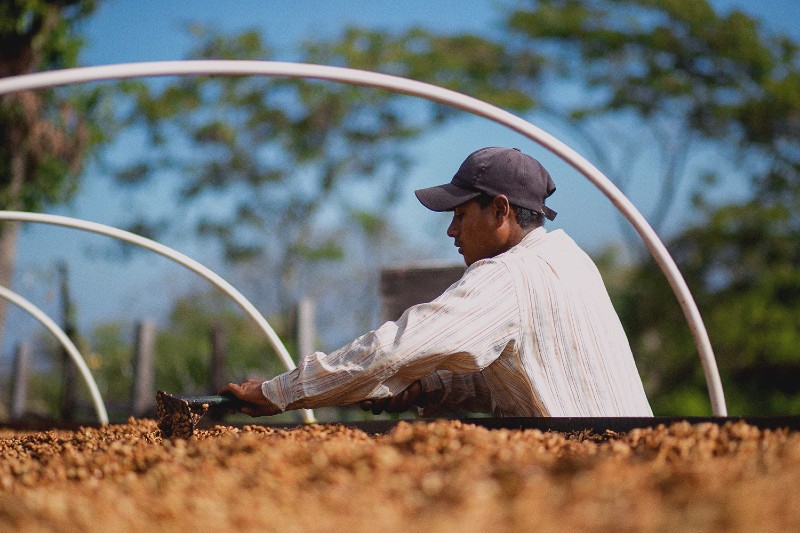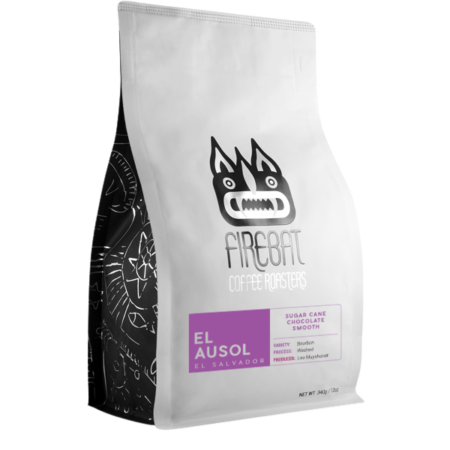Firstly What Does Processing Coffee Entail?
In the simplest of terms, processing coffee just means removing the bean from the fruit.
A few dominant methods of doing this have emerged over the years. The three main methods to process coffee are Natural (also called dry process), Washed (also called wet processed) and Honey (also called pulped natural). Each method of coffee lends itself to a different final cup flavour. So, roasters select and blend differently processed beans in order to achieve their desired flavour profile.
The success of the coffee processing is integral to having a quality roast. Even if you have the perfect growing and harvesting conditions, a poorly processed bean can destroy the quality of the final roast. Processing is a technical and time-consuming process and if done incorrectly will devalue the coffee.
Let’s explore the three main processing methods and discover what they mean and perhaps, which suits your tastes the most!
The Natural Processing Method of Coffee
This method is perhaps the most ancient and traditional way of doing things. Firstly, the cherries are harvested when they reach peak ripeness. The fruit stays on the bean in this processing method and dries undisturbed. After harvesting, they spread these cherries out in thin layers to dry naturally under the sun. The cherries are turned routinely to avoid any fermentation, rotting or moulding. Once the cherries are fully dry, the skin and dried fruit flesh is removed. The farmers then store the green coffee beans to “rest” before exporting them to a roaster.
The Natural processing method of coffee has received some criticism for inconsistency in the final flavour. This is often from unripe fruit being dried alongside the ripe cherries. However, if consistency is achieved in this method the flavour is amazing. Many coffee experts and connoisseurs believe that this method has the potential to create some of the most flavourful coffees. Natural coffees from Firebat coffee offering are dried on raised beds instead of patios, which has demonstrated a much higher degree of controlling the rate of drying to achieve consistent and clean coffees.
Since this method is done with the bean drying within the fruit, the flavour of the bean is often sweet and fruity. Coffee varieties processed naturally can have clarity and sweetness like no other. They can be fantastic as a stand-alone or can lend themselves to a blend for a beautifully layered and a depth of flavour to the final cup.
Natural process also carries environmental advantages, as farms do not use underground water for the process.


Next Up, We Have The Washed Method
This coffee processing method is a wet method as the name suggests. Entirely the opposite of the natural processing method, this one removes the fruit entirely from the bean before drying.
The coffee cherries are picked ripe and then put into a freshwater tank, after a period of 24 to 72 hours inside the tank, the fruit flesh is ready to be removed. Coffee cherries are sent through a machine called a de-pulper. This de-pulper removes most of the skin and fleshy parts of the fruit, this happens through a circuit of running water canals that “wash the coffee” on its journey from the de-pulper to a collection hopper.
After the beans have gone through the washing process they’re spread out to dry like the natural method. The beans are turned regularly to dry consistently and avoid any moulding or rotting. These beans can also be mechanically dried however, most farmers still use the sun to dry the beans.
This processing method of coffee focuses entirely on the bean. Its flavorful qualities depend exclusively on starting with a flavorful coffee cherry.
The final flavour comes directly from the sugars and nutrients that the bean retains during its growth hence soil qualities, plant nutrition, temperature, sunlight, everything plays a key role. Unlike the other two main methods, this one doesn’t have any sweetness that comes from drying with the fruit still on the bean.
The washed process can lead to brighter flavours in the final cup of coffee. Many praise this processing method as a true reflection of the bean qualities, also for its consistency, and pleasant acidity.

Last But Not Least We Have Honey Process
This processing method is essentially halfway between the natural and washed methods. This method is called Honey because of how sticky the bean gets during the process. The name is also appropriate since when done well the resulting bean can behave as if the producer has added honey or brown sugar to your cup of coffee.
So, like the other methods, the processing begins with harvesting the cherries. The cherries are then put through a de-pulper like the washed method. However, depending on the desired finished flavour, the amount of flesh left on the bean can be chosen. The more fruit flesh or mucilage left on the bean, the sweeter and fruitier the final cup is likely to be. This also results in the Honey washed process having subcategories. These subcategories indicate how much of the fruit is left on the bean when drying, Black Honey has the most, and then it becomes less and less from Red Honey, Yellow Honey and the least amount of mucilage being on the white honey.
Once the coffee has gone through the de-pulper it’s then dried like the other two methods. Turning regularly to avoid mould, rot and fermentation and to maintain consistency. However, because there’s less fruit left on the bean there’s less of a risk of fermentation. The drying time can range from as short as 4 days to many weeks. Once fully dry, the remaining mucilage is then removed and the green beans are ready to be stored then exported to a roastery.
The Honey processed varieties have a lovely sweetness and symphony of higher notes that a washed bean just can’t achieve. An yet, it also has a certain clean and brightness that a natural processed coffee doesn’t have.
The Honey Processed method allows for more nuance and seems to have the best of both worlds from the natural and washed methods.


A Compliment to the Bean
Each processing method lends itself to something different and can create an excellent final cup of coffee. The choice to use a specifically processed bean for a roast is entirely subjective. Here at Firebat, we enjoy bringing out the coffees natural strengths and bean flavours. We tailor our roasting methods to compliment the bean and create the best roast. Our small-batch and hand roasting method allow us to do this.
“As a roaster I approach coffee with a learning attitude, it is clear that nobody can naturally “add quality” to a coffee bean, that is done by nature itself. After the coffee cherry is picked we all take some of that quality away. We team up with great artisans that are not only consistent but also extraordinary in the farming landscape. From then we roast the beans skillfully to unlock their inner flavours”
Gustavo co-founder of Firebat Coffee Roasters
Try out coffees processed with different drying methods:
-
El AusolFrom$20.00

